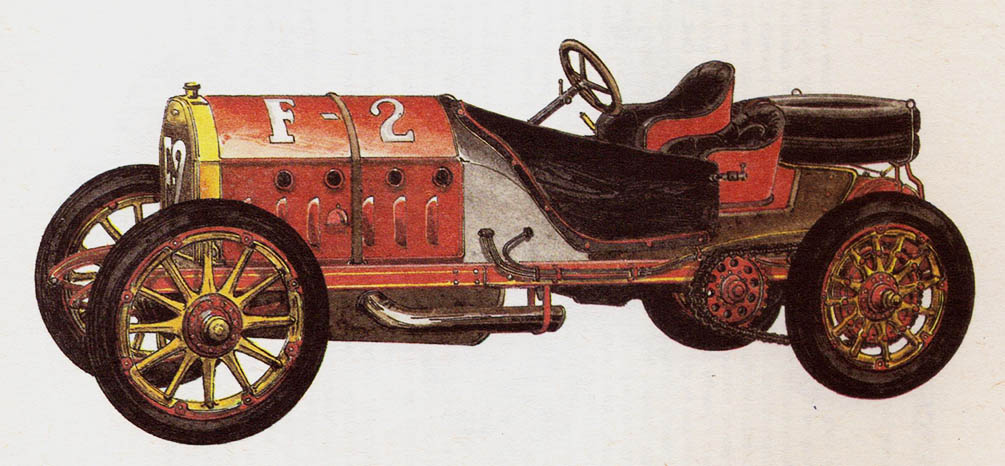FIAT – year 1907
Italian Automobile Factory Turin, Turin, Italy.
W 1907 In the year, the second ACF Grand Prix races were held at the new circuit outside Dieppe on the north-west coast of France. In accordance with the amended racing regulations, fuel consumption was reduced to 30 l/100km. For the first time, car bodies differed from one another in terms of nationality: green – English, White – German, blue – French and red - Italian.

Italian Automobile Factory Turin, Turin, Italy.
This time the duel between Renault and Fiat ended with the victory of the Italian competitor Felice Nazzaro, driving a Fiat, before Shisha, driving a Renault car. Fiat z 1907 r. had a four-cylinder engine with total displacement 16 286 cm3; the diameter of the cylinder was 180 mm, a stroke of the piston 160 mm. It was basically the stronger version of the racing car z 1905 year, which was the first to have an OHV valve timing, i.e. the valves located in the cylinder heads were controlled by rods by a camshaft on the side of the engine. Engine power 95,6 kW(130 KM) by 1600 rpm allowed reaching the maximum speed 158 km/h. The ignition was from a low-voltage magneto. Instead of the usual dry cone, a multi-disc wet clutch has been used, which for a long time has become the most popular means of transferring power between the engine and gearbox. The traditional chain transmission from a four-speed gearbox to the rear wheels remains unchanged. The overall concept of the car was classic: rectangular frame with rigid axles on longitudinal leaf springs and wooden wheels with replaceable rims, a powerful honeycomb cooler in front, behind it, the longitudinal engine and a seat for the driver and mechanic, behind them was a cylindrical fuel tank. The total weight of the car was 1371 kg. Happy Nazzaro, driving it in the Grand Prix ACF competition, obtained an average speed 113,6 km/h. He only had his tank left at the finish line 11 liters of fuel.
W 1907 of the year, Nazzaro in Fiat won, apart from the Grand Prix, other famous races - the Targa Florio in Sicily and the "Kaiserpreis” organized in Germany, and named after the cup, which was handed to the victors by Emperor Wilhelm II.